New pattern: the Smith Pinafore Dress
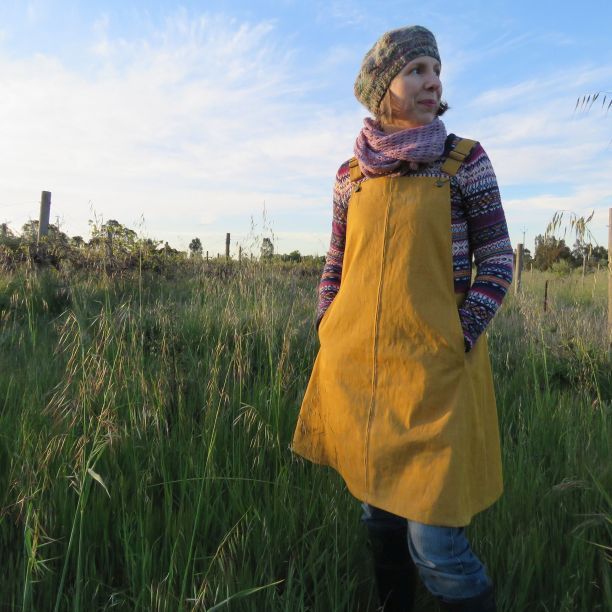
Hi Everyone,
I’m excited to introduce a new pattern: the Smith Pinafore Dress.
It’s in my little Etsy shop now; please enjoy 25% off during October.
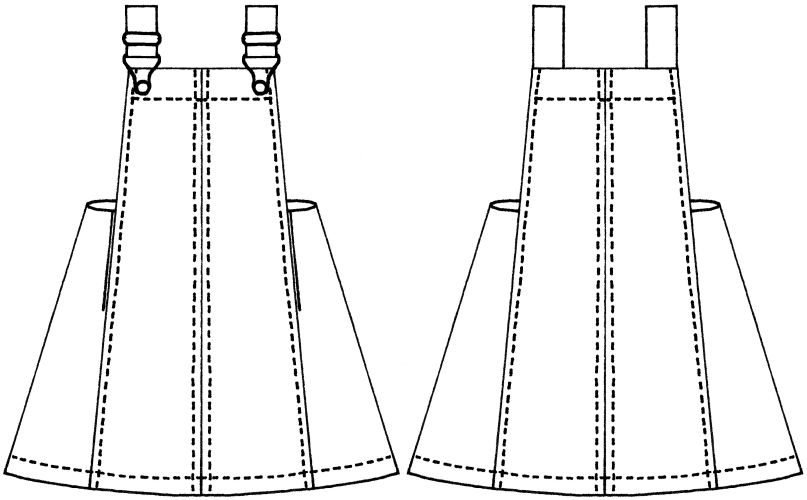
This pattern comes in 12 sizes, from an 87cm/34″ bust to a 142cm/56″ (but can actually be made bigger than that). It’s designed for traditional non-stretch (rigid) denim and can also be made in canvas or heavy cotton drill.
UPDATE: this pattern works very well using upcycled jeans – the panels are cut from the jeans legs. I made one in this blog post using absolute rubbish black jeans and it turned out great!
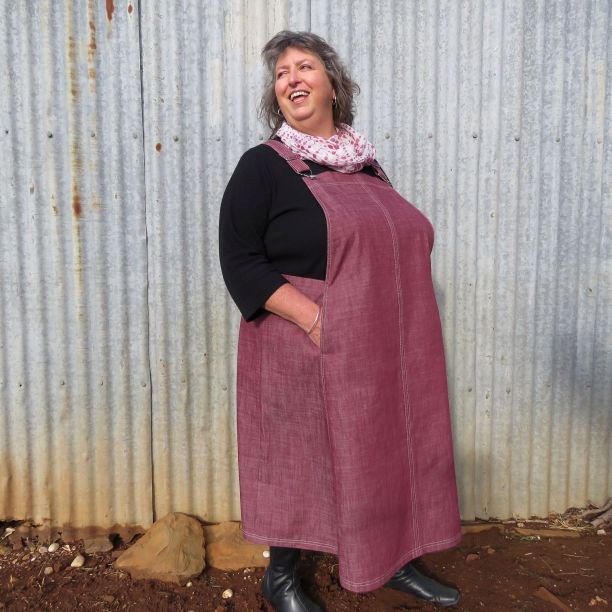
The fit is roomy enough to wear a jumper/sweater underneath and can be made slimmer simply by running in the side seams.
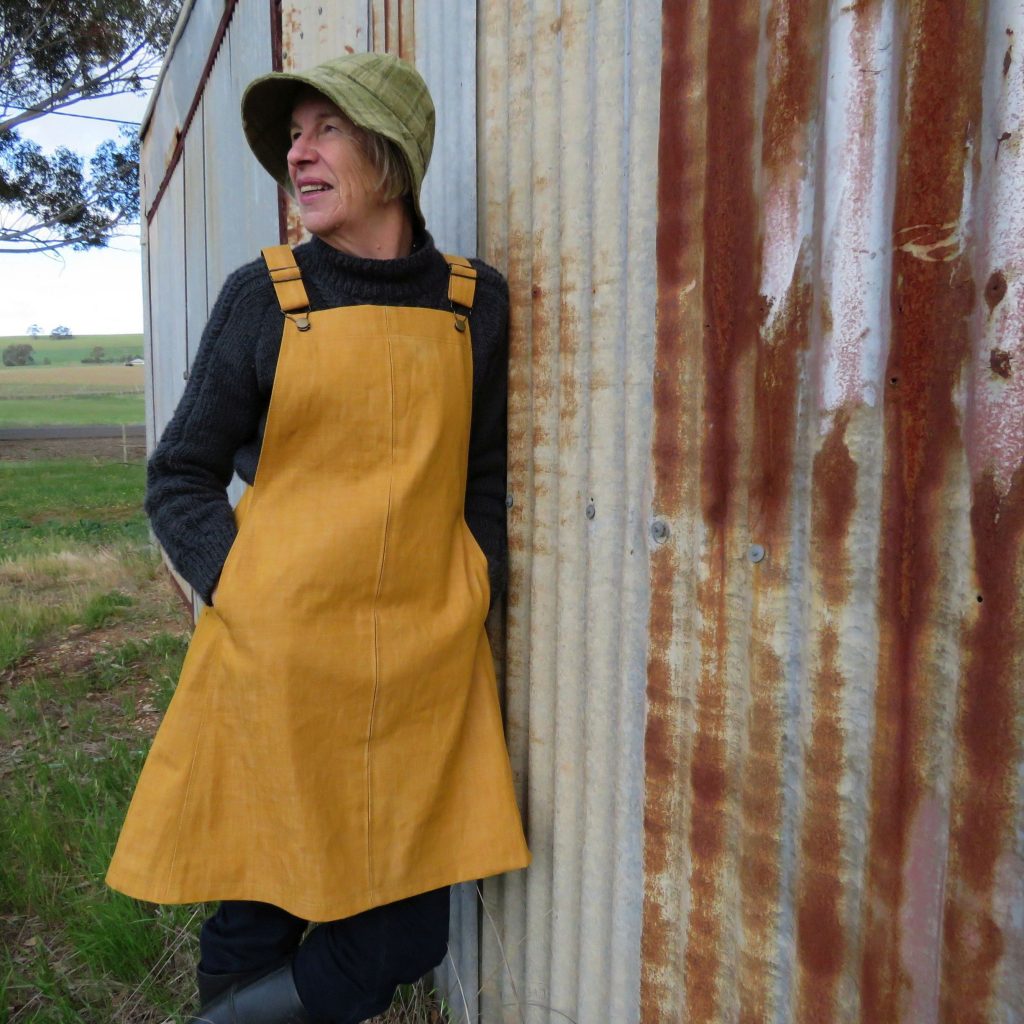
The clean, utilitarian lines hide pockets in the front seams, which are also the pinafore’s closure.
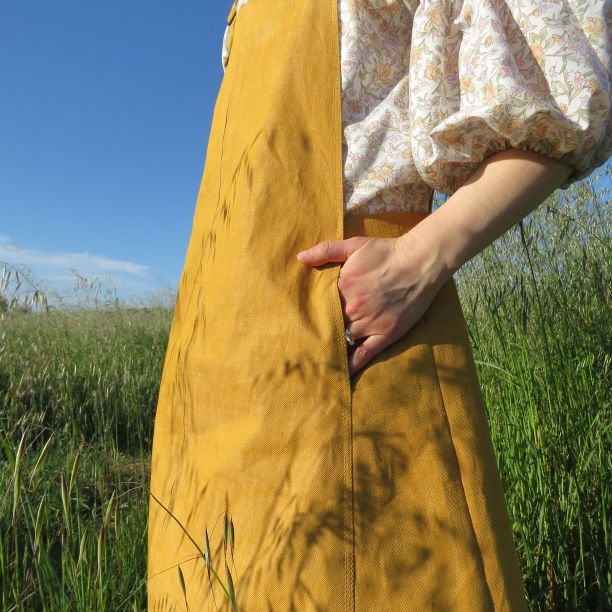
Here it is opened out – the pocket fastens securely with a giant press stud.
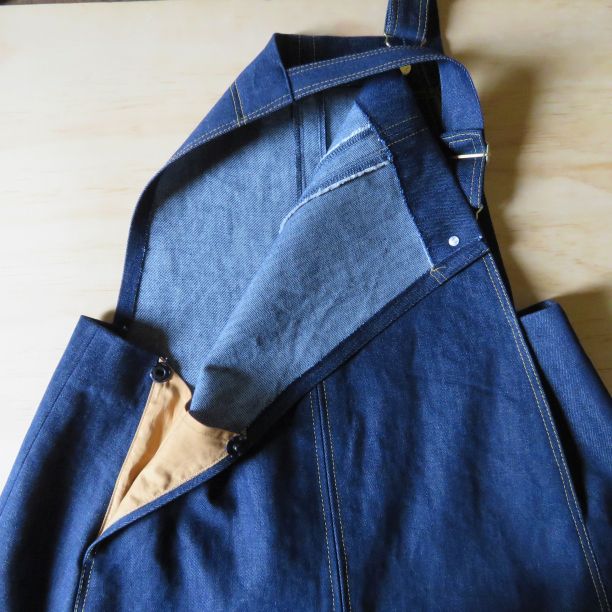
In a departure from the zero waste theme of my other patterns, this one is low waste. The reason I did this was to accommodate any width of denim and be able to offer a wide range of sizes.
What makes it low waste?
The idea is that the pattern pieces join together to make rectangles. They’re cut like this:
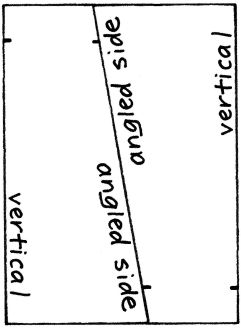
And are sewn together like this:
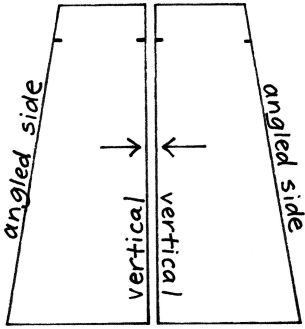
All the pieces, even the pocket bags, form rectangles.
After cutting out, you’re left with a rectangular-sized offcut which is far easier to use for other things than lots of little odd-sized offcuts.
This is how some zero waste designers manage zero waste – they keep their offcuts in easy-to-use modular rectangles where they can be used for other sizes of the same pattern or for other garments.
The centre back and front feature a slot seam. Have you ever done one?
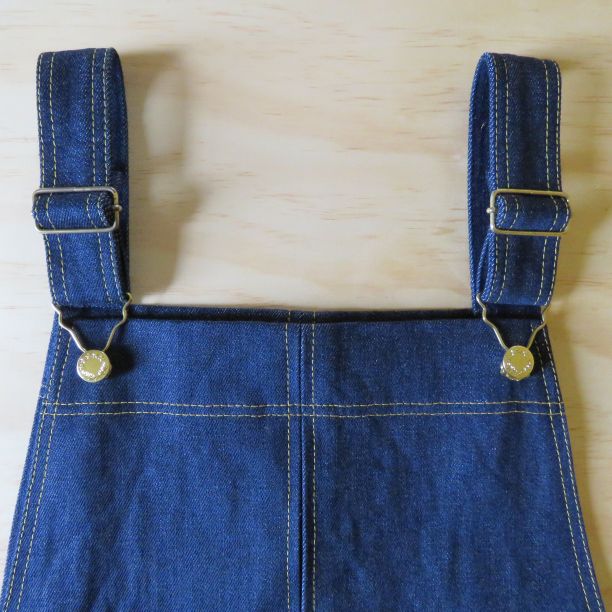
This dress is practically a tribute to topstitching!
The Smith Pinafore looks good worn with the Sawyer Hoodie, and the navy-on-navy combo pleasantly surprised me – I love this look.
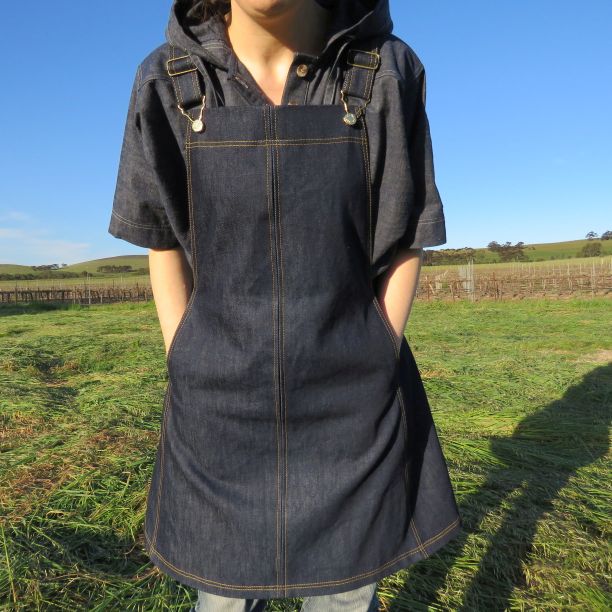
I also like it with a white blouse.
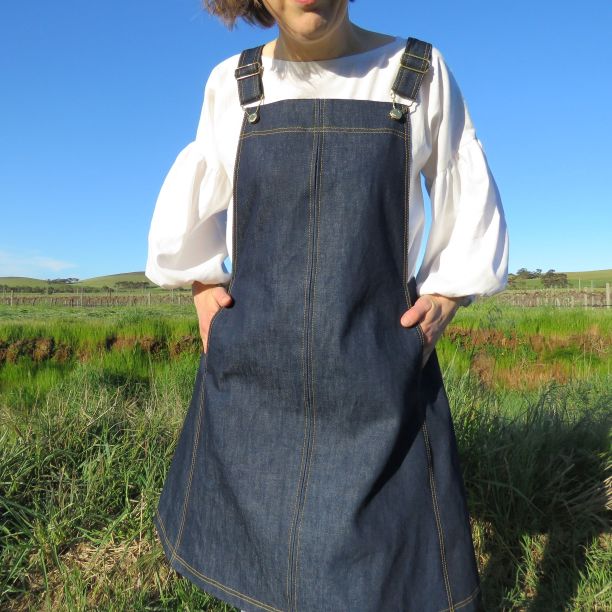
Here’s me wearing the original prototype. The central red strip hides the fact that I didn’t cut the panels wide enough initially – they’re just butted together behind the strip.
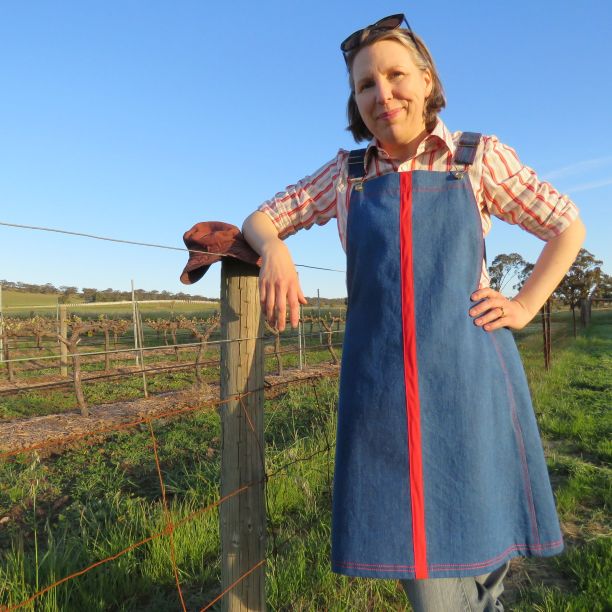
This was an interesting diversion into making modular pattern pieces and is another approach to zero waste. I plan to return to the goal of all-zero waste for future patterns.
Cheers!
Love the prototype with the red stripe and topstitching!
Thanks Kim – I like red on denim too. My 11 year old has been wearing this, after having a massive “lockdown growth spurt”!
this is brilliant Liz, I love it. It works beautifully as a garment and is the epitome of sustainability.
Thank you very much! I think it’s a bit “you”!
This looks like a really versatile pattern for all shapes and sizes. My sister is in the larger size range, so the pinafore modelled on a curvy model helps. She looks lovely and I will make one as a Christmas gift for my sister.
Thanks Dev. It’s turned out to be very versatile and I’ve been wearing the samples much more that I thought I would.
It will make a very thoughtful Christmas gift for your sister.
I’ve just purchased and downloaded this, and I’m looking forward to a nice easy thing-to-wear-over-T-shirts this summer (also, pocketses). I love rectangular construction and I wish more contemporary designers used it. A couple of questions: is there a structural need for the slot seam, and what are your thoughts on using jeans buttons to secure the pockets?
Thanks Rachel. I can attest it’s very easy to wear.
In answer to your questions…
No, there’s no structural need for a slot seam – you could sew it as a regular seam if you wanted to. It’s there for aesthetics and general sewing interest 🙂
Yes, you could use jeans buttons or any type of button to secure the pockets. You might find you don’t really need a fastening for the pockets and can just pull the pinafore on over your head.
I’ve just finished sewing this, and taken it for a test walk. I love it. It’s exactly what I need to fill a gap in my wardrobe and I will almost certainly make another one soon. The low-waste concept works really well, the finished garment is comfortable, practical and attractive, and the instructions are excellent.
I omitted the slot seams because I was in a hurry, and used jeans buttons for the pocket fastenings. If anyone else tries this, I recommend adding a bit of interfacing, or choosing your button position strategically to make sure it’s attached through the denim seam allowance as well as the pocket fabric.
I would suggest a small tweak to the instructions, which is to tuck under the tops of the pocket corners when attaching to the front panels as well as the side ones. If I were to make this again, I’d also make the pockets a bit bigger to accommodate a phone AND my hand a little more easily.
So glad you like it Rachel. Many thanks for the handy sewing tips and I’ll review the instructions.